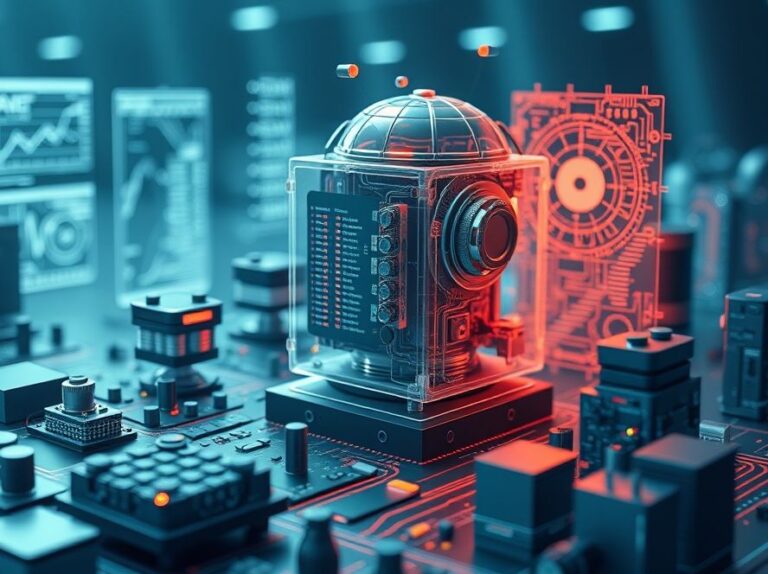Understanding Programming Languages in 2023
Programming languages are essential tools that enable developers to communicate with computers, turning ideas into functional applications. In 2023, the landscape of programming languages continues to evolve, driven by advancements in technology and the growing demand for innovative solutions. This article provides a comprehensive overview of programming languages, highlighting their significance, key features, and practical applications for beginners, students, and professionals.
The Importance of Programming Languages
Programming languages serve as the foundation for software development, web applications, data analysis, and more. They allow developers to write code that instructs computers to perform tasks efficiently. In 2023, understanding different programming languages is crucial for anyone looking to enter or advance in the tech field. The choice of language can impact the performance, scalability, and maintainability of an application.
Types of Programming Languages
- High-Level Languages: These languages are user-friendly and closer to human languages. Examples include Python, Java, and Ruby.
- Low-Level Languages: These languages provide little abstraction from a computer’s instruction set architecture. Assembly language is a prime example.
- Scripting Languages: Designed for automating tasks, scripting languages like JavaScript and PHP are widely used in web development.
- Functional Languages: These languages, such as Haskell and Scala, emphasize the application of functions and immutability.
Key Programming Languages to Know in 2023
As the tech industry advances, certain programming languages have gained prominence due to their versatility and robust community support. Here are some key programming languages to consider:
1. Python
Python continues to be a favorite among developers for its simplicity and readability. It’s widely used in data science, machine learning, artificial intelligence, and web development. With a rich set of libraries such as Pandas and TensorFlow, Python allows for rapid prototyping and development.
2. JavaScript
JavaScript remains the backbone of web development. It enables interactive web pages and is essential for front-end frameworks like React and Angular. Its versatility extends to back-end development with Node.js, making it a must-know for full-stack developers.
3. Java
Java is renowned for its portability across platforms, thanks to the Java Virtual Machine (JVM). It’s widely used in enterprise environments, mobile app development (Android), and large-scale systems. Java’s strong typing and object-oriented features make it a reliable choice for building complex applications.
4. C#
C# is a versatile language developed by Microsoft, commonly used for developing Windows applications and games using the Unity platform. Its integration with the .NET framework allows for building scalable and high-performance applications.
Applications of Programming Languages
Programming languages are not just theoretical concepts; they have practical applications across various domains. Here are a few examples:
- Web Development: Languages like HTML, CSS, and JavaScript are fundamental for creating dynamic and responsive websites.
- Data Science: Python and R are preferred for data analysis, visualization, and machine learning, enabling professionals to extract insights from data.
- Mobile Development: Swift and Kotlin are used for developing iOS and Android applications, respectively, catering to the growing mobile market.
- Game Development: C++ and C# are popular choices for game development, providing developers with the tools needed to build immersive experiences.
How to Get Started with Programming Languages
For beginners looking to dive into programming, here are some actionable steps:
- Choose Your Language: Start with a language that aligns with your goals. Python is great for beginners, while JavaScript is ideal for web enthusiasts.
- Utilize Online Resources: Platforms like Codecademy, freeCodeCamp, and Coursera offer courses that cater to various skill levels.
- Build Projects: Apply what you’ve learned by working on small projects. This could be a personal website, a simple game, or a data analysis project.
- Join the Community: Engage with fellow learners and professionals through forums like Stack Overflow, GitHub, and developer meetups to gain insights and support.
Related Concepts in Programming
Understanding programming languages also involves familiarizing yourself with related concepts that enhance your coding skills:
- Version Control Systems: Tools like Git help manage changes in your code and facilitate collaboration.
- Frameworks and Libraries: These are pre-written code that simplify development. For example, React is a JavaScript library for building user interfaces.
- Software Development Methodologies: Familiarize yourself with Agile, Scrum, and DevOps to understand how teams manage projects effectively.
- APIs (Application Programming Interfaces): APIs enable different software applications to communicate with each other, enhancing functionality.
Conclusion
In conclusion, programming languages are vital in the technology landscape of 2023. They empower developers to create innovative solutions and applications that impact various industries. By understanding the different types of programming languages, their applications, and how to get started, you can position yourself for success in the ever-evolving tech world. Remember, the key to mastering programming is continuous learning and practical application. So, dive in, start coding, and explore the endless possibilities that programming languages offer!
Engage with the programming community, experiment with different languages, and don’t be afraid to make mistakes—it’s all part of the learning journey!









